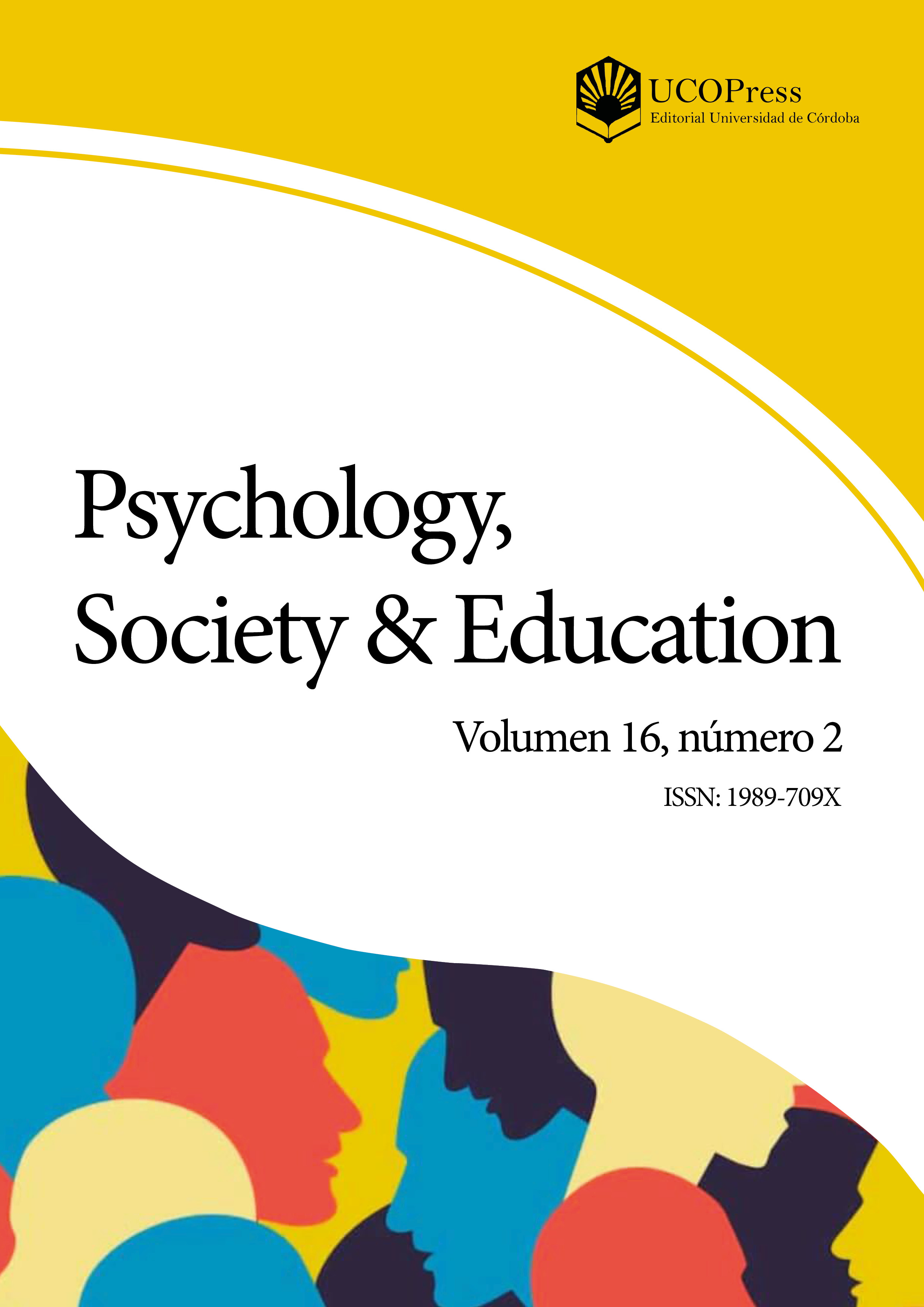The State, the self, and the willingness to co-exist: teachers’ perceptions of the other in Israel
Main Article Content
Abstract
As a result of structured separation in everyday life, Israel’s Arab and Jewish youth rarely interact, which contributes to a deepening and mutual sense of distance, distrust, and racism. Teachers, as agents of social change, can lead educational processes to bridge the ideological distance between Arabs and Jews in Israel, and to create an environment of dialogue and acceptance. This study used a sample of 300 teachers (150 from the Jewish ethnic group and 150 from the Arab ethnic group) to explore their perceptions and attitudes. Findings revealed that, compared to their Jewish counterparts, Arab teachers perceive the state’s attitude toward them as more negative. We found that Arab teachers’ perception of citizen-state relations was higher than that of Jewish teachers; identity perception among Arab teachers was lower than Jewish teachers; and coexistence perception among Jewish teachers was higher than Arab teachers. These findings can be a base for intervention programs at national and local levels and encourage the adoption of multicultural strategies to integrate Israel’s Arab population as equal citizens through social and political motivations.
Downloads
Publication Facts
Reviewer profiles N/A
Author statements
- Academic society
- Psychology, Society & Education
- Publisher
- UCOPress. Universidad de Córdoba
Article Details

This work is licensed under a Creative Commons Attribution-NonCommercial-ShareAlike 4.0 International License.
The journal retains the economic copyright of contributions that are accepted for publication. This means that it acquires the exclusive use of the document to be edited, disseminated, preserved, etc. in any support and for the time stipulated by the local legislation that regulates the performance of the publication.
![]() Psychology, Society & Education is published under CC BY-NC-SA 4.0
Psychology, Society & Education is published under CC BY-NC-SA 4.0
References
Abu-Asba, K. (2020). Shared work environments: How do they affect relations between Jews and Arabs? The Israel Institute for Democracy.
Achord Institute. (2021). The partnership index among youth in Israel in 2020. Hebrew University of Jerusalem.
Allport, G. W. (1954). The nature of prejudice. Addison-Wesley.
Bels, N. (2022). Achievements and gaps in the education system in Israel: A review. Taub Center for Social Policy Research in Israel.
Ben-Meir, A. (2023). Psychological impediments are at the core of the Israeli-Palestinian conflict. Politics & Policy, 51(3), 488-503. https://doi.org/10.1111/polp.12535 DOI: https://doi.org/10.1111/polp.12535
Berger, C., & Andaur, A. (2022). Integrating prosocial and proenvironmental behaviors: The role of moral disengagement and peer social norms. Psychology, Society & Education, 14(3), 18-28. https://doi.org/10.21071/psye.v14i3.15113 DOI: https://doi.org/10.21071/psye.v14i3.15113
Eagly, A. H., & Koenig, A. M. (2021). The vicious cycle linking stereotypes and social roles. Current Directions in Psychological Science, 30(4), 343-350. https://doi.org/10.1177/09637214211013775 DOI: https://doi.org/10.1177/09637214211013775
Ersoy-Ceylan, T. (2023). Social identities in conflict: Israeli Palestinians and Israeli Jews. Digest of Middle East Studies, 32(3), 206-222. https://doi.org/10.1111/dome.12300 DOI: https://doi.org/10.1111/dome.12300
Falah, G., Hoy, M., & Sarker, R. (2000). Co-existence in selected mixed Arab-Jewish cities in Israel: By choice or by default? Urban Studies, 37(4), 775-796. https://doi.org/10.1080/00420980050004017 DOI: https://doi.org/10.1080/00420980050004017
Goh, M. (2012). Teaching with cultural intelligence: Developing multicultural educated and globally engaged citizens.
Asia Pacific Journal of Education, 32(4), 395-415. https://doi.org/10.1080/02188791.2012.738679 DOI: https://doi.org/10.1080/02188791.2012.738679
Ḥaj Yaḥya, A. (2021). Between particularism and pluralism: Children’s literature as a multicultural agent. Social Identities, 27(6), 660-681. https://doi.org/10.1080/13504630.2021.1915758 DOI: https://doi.org/10.1080/13504630.2021.1915758
Hermann, T. (2017). A Conditional Partnership- Jews and Arabs. The Israel Democracy Institute.
Hisherik, M., & Gindi, S. (2022). ‘We were not even trained to have an opinion’: Political socialization of Arabs in Israel. Citizenship Teaching & Learning, 17(2), 249-271. https://doi.org/10.1386/ctl_00093_1 DOI: https://doi.org/10.1386/ctl_00093_1
Hisherik, M., & Paul-Binyamin, I. (2024). The educator’s role in democratic and multicultural societies: Student perceptions at a teacher training college in Israel. Journal for Multicultural Education. https://doi.org/10.1108/JME-08-2023-0077 DOI: https://doi.org/10.1108/JME-08-2023-0077
Israeli, S. (2020). National Security Index: Trends in Public Opinion in Israel. National Security Institute.
Jah, E., Iruonagbe, F., & Napon, N. (2023). Identity conflict in Nigeria: An analytical deconstruct. Kashere Journal of Politics and International Relations, 1(1), 199-207. https://goo.su/zbqiyM4
Kupermintz, H., Rozan, Y., Solomon, G., & Hsisi, R. (2007). The perception of the other among Jewish and Arab youth in Israel- Summary of research findings. Haifa University.
Nahhas, E. (2020). Multiculturalism and inter-faith understanding at teaching colleges in Israel: Minority vs. majority perspectives. Religious Education, 115(4), 436-451. https://doi.org/10.1080/00344087.2020.1770012 DOI: https://doi.org/10.1080/00344087.2020.1770012
Niwa, E. Y., Boxer, P., Dubow, E. F., Huesmann, L. R., Landau, S., Shikaki, K., & Dvir Gvirsman, S. (2016). Negative stereotypes of ethnic outgroups: A longitudinal examination among Palestinian, Israeli Jewish, and Israeli Arab youth. Journal of Research on Adolescence, 26(1), 166-179. https://doi.org/10.1111/jora.12180 DOI: https://doi.org/10.1111/jora.12180
Rodin, S. (2019). And that the Jews will understand that not all Arabs are bad people and terrorists and murderers: Attitudes of Israeli teaching students towards multicultural issues, arising from their reactions to a novel dealing with relations between Jews and Arabs. Social Issues in Israel, 27, 71-105. https://doi.org/10.26351/SIII/27/3 DOI: https://doi.org/10.26351/SIII/27/3
Rotem, R. (2019). Prison service statistics: Only around one-quarter of the prisoners in Israel are Jews. Mekomit.
Rozner, S., Fox, K., & Slapkov, N. (2022). Shared spaces, challenging spaces: What the 2022 pluralism index survey data of the Jewish People’s Policy Institute reveal. The Jewish People Policy Institute.
Samooha, S. (2012). Not breaking the dishes: Arab-Jewish relations index in Israel 2012. Israeli Democracy Institute.
Samooha, S. (2022a). Still playing by the rules. Index of Arab-Jewish relations in Israel 2019. Haifa University.
Samooha, S. (2022b). Arabs and Jews in a Jewish and democratic country. Egeret Keslo, 44, 44-55.
Tajfel, H. (1981). Human groups and social categories. Cambridge University Press.
Törnquist-Plewa, B. (2000). Contrasting ethnic nationalisms: Eastern Central Europe. In S. Barbour & C. Carmichael (Eds.), Language and nationalism in Europe (pp. 193-220). Oxford University Press. DOI: https://doi.org/10.1093/oso/9780198236719.003.0009
Werf, F., Verjuyten, M., Martinovic, B., & Tseung-Wong, C. (2020). Forms of blended bicultural identity: Identity conflict and harmony in culturally diverse Mauritius. Journal of Cross-Cultural Psychology, 51(2), 134-148. https://doi.org/10.1177/0022022119895316 DOI: https://doi.org/10.1177/0022022119895316


